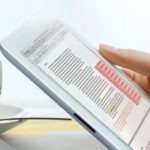Successfully Writing Covering Letters for Journal Papers
Robert Louis Stevenson adroitly noted in one of his many books that ‘the wheels of an interview are at the mercy of a thousand ruts.’ For anyone with personal experience of job interviews, his meaning will no doubt be immediately clear, but Stevenson was referring to conversations more generally, though particularly those of an important nature or with significant consequences. The communication between an aspiring academic or scientific author and the acquisitions editor of a scholarly press or journal can certainly be considered an ‘interview’ or ‘conversation’ that has serious consequences, especially for the author. Whether you are drafting a covering letter to accompany the document you are submitting for consideration or responding to the critical comments an editor has offered, avoiding the ruts whenever possible is absolutely imperative. A few basic but reliable strategies for promoting a smooth ride may therefore prove useful.
• Write well. Obviously this applies to the book or article you are hoping to publish, but it also applies to all of the correspondence you send to the editor or other staff members of the journal or publisher. Your messages not only introduce and discuss your writing, but also serve as samples of that writing, so it is essential that you communicate clearly and do not confuse or discourage an editor with errors and awkward constructions.
• Maintain a formal approach. Email and other online communication tends to promote informality, but negotiating publication of academic or scientific writing via a scholarly journal or publisher is a professional matter, so both your writing and the tone it presents should maintain a professional formality and demonstrate respect for your correspondent.
• Be interesting. Your research and the writing based upon are obviously fascinating to you, and if you have chosen a journal or publisher with care, they should also be interesting to the acquisitions editor you are addressing. Play upon this interest by highlighting the most innovative and groundbreaking aspects of your methods, results and conclusions, and keep them in focus even when you are discussing critical feedback and possible revisions to your work.
• Be relevant. There may be many aspects of your work that fascinate you, each of them, to your eye, worthy of emphasis, but every scholarly journal or press has a particular range and specialisation, and developing the connection between your work and the publisher’s mission is part of the goal in communicating with an acquisitions editor. Familiarise yourself with the publisher’s mission statement and its recent publications, and then make sure you present your work in ways that fit the publisher.
• Be specific. Anyone can send a document to a prospective publisher and inform the acquisitions editor that it is a perfect piece for publication, but that alone does not tell the editor why it is perfect. What is required in a covering letter is specific information about why the topic, approach, findings, conclusions and so on are exactly what the journal or press would prefer to publish. If you find yourself communicating with an editor about critical commentary and revisions, being specific about exactly what you can and will change, and, conversely, what you cannot and will not change is essential to success.
Remember that, unlike a face-to-face interview or conversation in which a hastily spoken word cannot be recalled, the written communication that tends to be the most common mode of exchange between an author and an acquisitions editor is created in privacy with the time to adjust and polish every word until it is right. Avail yourself of this opportunity by writing with care, giving yourself time to reflect on everything you write, soliciting the help of colleagues, mentors and professional editors if you feel the need, and revising at will until you achieve a result that says precisely what you would have it say.
You might be interested in Services offered by Proof-Reading-Service.com
Journal Editing
Journal article editing services
PhD Thesis Editing
PhD thesis editing services
Expert Editing
Expert editing for all papers
Medical Editing
Medical Editing Services
Research Editing
Research paper editing services
Book Editing
Professional book editing services

















